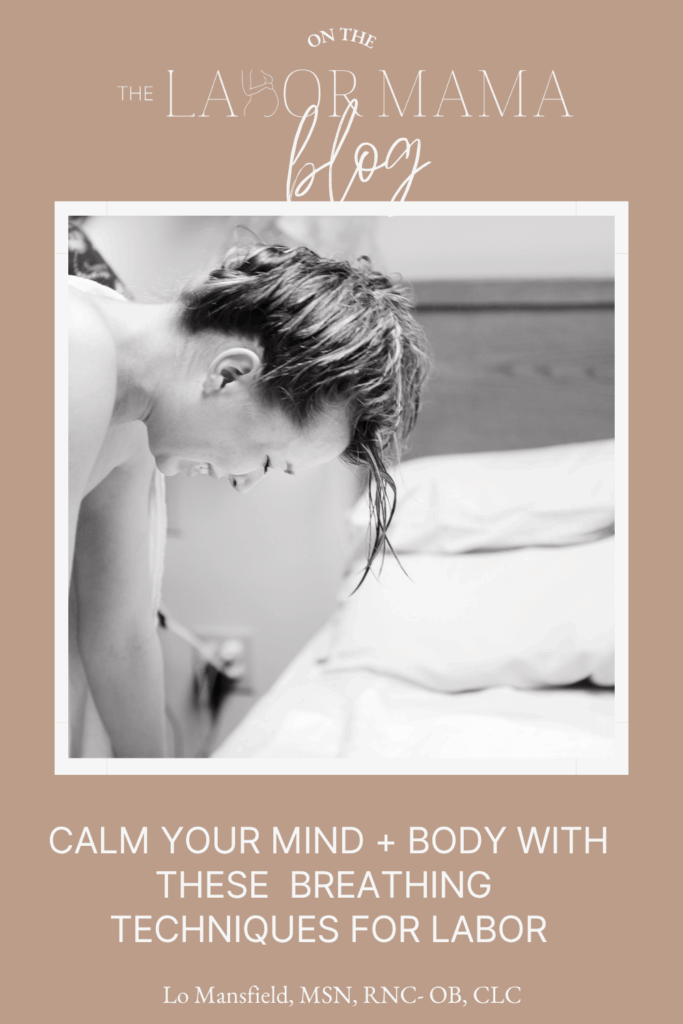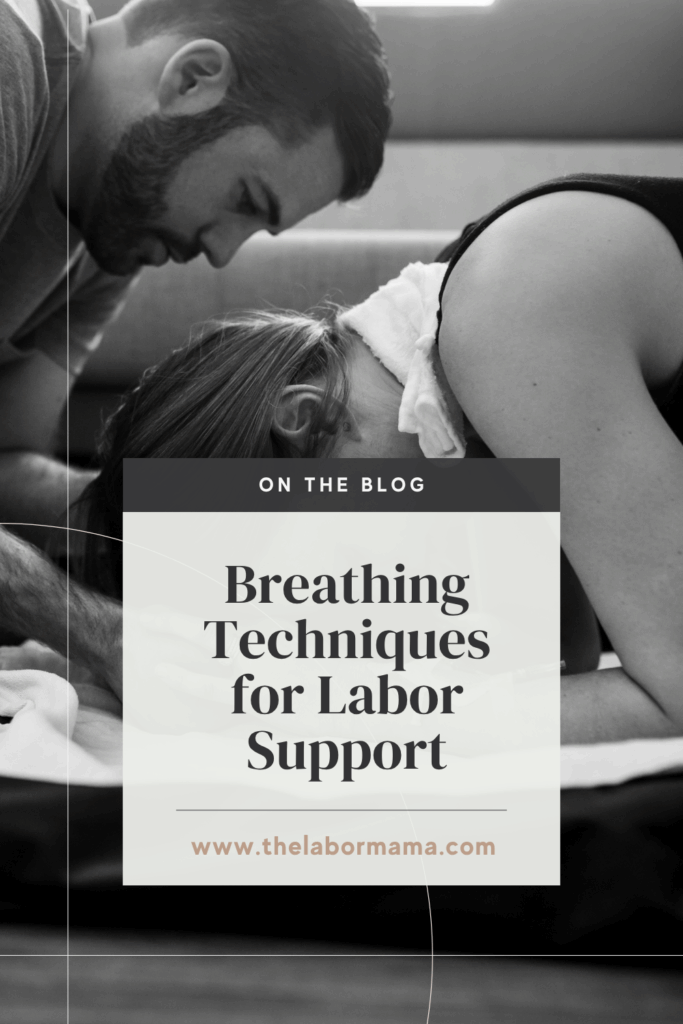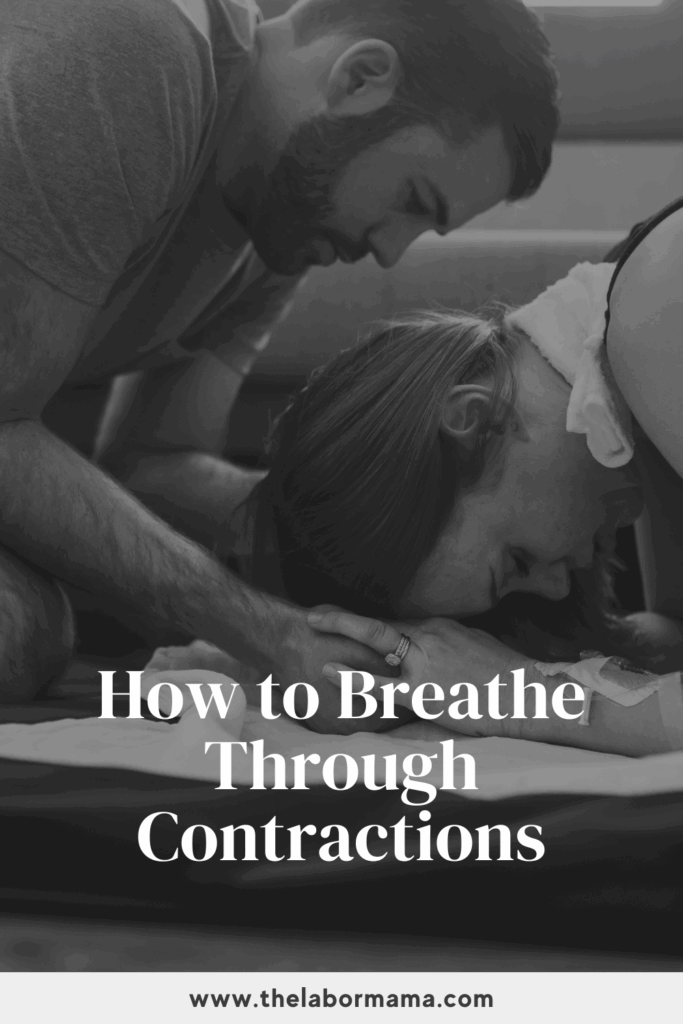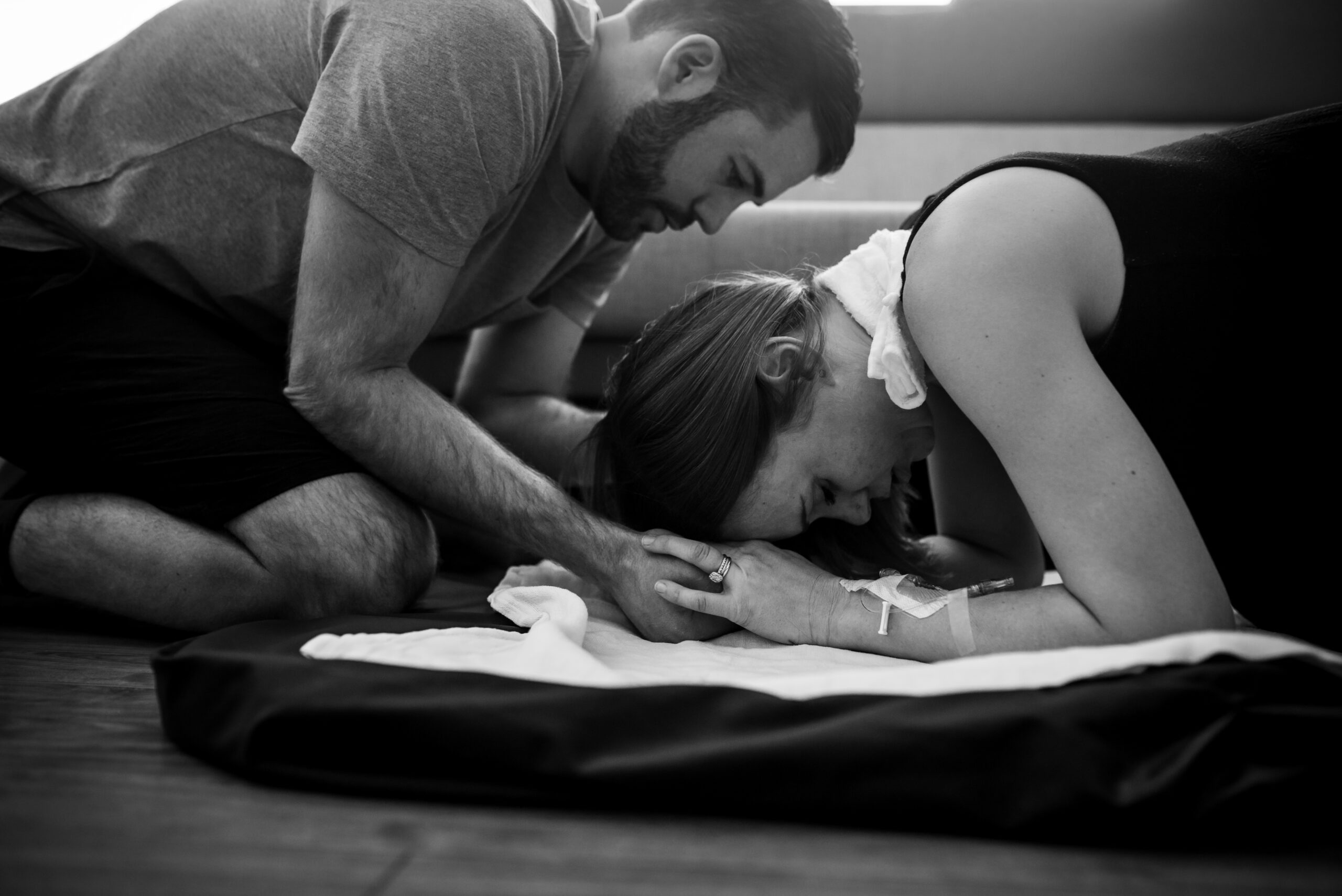Here’s the truth, mama: it doesn’t matter if you’re planning an unmedicated birth, an epidural, or even a scheduled cesarean—your breath is always with you.
And in labor, that breath becomes so much more than just automatic function. It becomes a tool—one that supports your nervous system, reduces pain perception, and helps your baby get the oxygen they need.
We spend so much time preparing for labor with birth plans and packing lists (and those things do matter!), but learning how to use your breath? That’s next-level preparation. It’s free. It’s accessible. And it’s something only you can control.
No matter what birth path you take, your breath can help you stay calm, focused, and in control—even when things get intense.
Who is The Labor Mama and Why Am I Here?
Hey friend! I’m Lo – also known around here and social media as The Labor Mama. I’ve spent my nursing career in labor, delivery, and postpartum, have birthed 4 of my own babies, have labored thousands of mamas at the bedside, have taught hundreds of students online, and have even delivered a few speedy little babies with my bare hands (oops).
Here at TLM, I offer online classes to empower you the way everyone should be. The education + support I offer gives you experience, evidence, and empathy; you’re getting all of my years of “clinical” RN knowledge, beautifully combined with my real experiences as a mama and a nurse. These are not your average hospital classes (those won’t do it, I promise), and honestly, birth, postpartum, and breastfeeding don’t follow a textbook or protocol anyway. You need to know so much more than that!
If you want to connect with me further, head to Instagram. There are hundreds of thousands of us over there learning together daily.
A note: This post may include affiliate links. This means if you make a purchase after clicking a link, I will earn a small commission (thank you)! Rest assured, this comes at no additional cost to you. You can read TLM’s full disclosure here.
Is There Research Behind Breathing Techniques for Labor?
We know breathing techniques in labor feel good in theory. But what does the research actually say?
Well, while there’s a wide range of breathing techniques out there (which makes direct comparisons tricky), studies have found some encouraging connections:
- Less perineal damage during pushing
- Lower pain scores
- Higher birth satisfaction
- Fewer interventions overall
And maybe most fascinating? How different breath patterns impact your nervous system.
Quick, shallow inhales (especially through the mouth) can trigger your sympathetic nervous system—the part responsible for fight or flight. This can make you feel more anxious or reactive during contractions.
On the other hand, long, slow exhales help activate your parasympathetic nervous system—the one responsible for rest and digestion. This creates a sense of calm and groundedness. Practicing that kind of exhale can literally help you move through the intensity of labor with more peace and presence.
The fear tension pain cycle def comes into play with all of this – you can read more about that cycle right here.
What Is Patterned or Paced Breathing?
You’ve probably heard the movie-version of labor breathing:
“Hee hee hoo, hee hee hoo…”
That pattern—made popular in the 1960s thanks to Lamaze birth instruction—was once taught as the gold standard. Today? We’ve moved away from rigid rules and toward a more intuitive, individualized approach.
Now we use terms like patterned or paced breathing to describe rhythms you can practice, adapt, and personalize as you move through labor.
This could include:
- Slow abdominal breaths during early labor
- Shorter, lighter breaths as contractions build
- Long exhales or vocalized breathing (like moaning, humming, or sighing)
- Intentional breaths that match the rhythm and wave of your contractions
The key is finding what works for you and feeling confident enough to shift your breath as labor changes. It also means if “hee hee hoo” is working for you – do it! You should just be choosing.
Can You Really Practice Breathing for Labor?
Absolutely. And you should.
Intentional breathing may sound simple—and it is—but using it in the middle of a contraction takes muscle memory and mental presence. That’s why practice before labor can make a world of difference.
Here’s how to start:
- Try deep breathing while you shower, drive, or rest in bed.
- Use a 60-second timer to mimic the average length of a contraction.
- Try starting and ending with a cleansing breath: inhale deeply through your nose, then exhale through your mouth like you’re letting go of tension.
You don’t need to master 10 different techniques. You just need to build awareness and confidence in your own rhythm—so when it matters most, your breath is already a trusted tool.
Here’s another fun way to practice breathing before labor (and see how your body wants to respond to discomfort).
What are Some Breathing Techniques You Might Use in Labor
Without giving away too much (this is all deeply covered in the Your Body, Your Birth course!), here’s a quick glimpse at some breathing styles that many mamas explore:
- Slow Paced Breathing – great for early labor; long inhales and even longer exhales
- Moderate Paced Breathing – helpful as contractions grow in intensity; short, light breaths
- Transition Breathing – patterned (think: “pant pant blow”) and supportive in the toughest waves
- Boxed Breathing – even counts for inhale, hold, exhale, hold
- Horse Lips – yes, it’s a thing… and yes, it can help relax your jaw and pelvic floor!
- Tonal or Vocalized Breathing – using “ahhhh” or “oooh” sounds to guide your exhales
Some of these may sound strange now, but when practiced ahead of time, they can become second nature—tools that help you stay grounded, connected to your body, and even help your baby move down more smoothly.
In Your Body, Your Birth, we walk through exactly when, why, and how to use each of these tools—with audio guides, practice scripts, and so much more.
You’ve Been Breathing Your Whole Life—Now It’s Time to Use That Breath to Help Bring New Life
Birth isn’t about perfection. It’s about presence.
There may be moments in labor where things feel hard, fast, or unfamiliar—but your breath can bring you back. Back to your body. Back to your baby. Back to your strength.
And the best part? You don’t have to figure it out alone.
I teach all of this (and so much more!) inside my course, Your Body, Your Birth—a beautiful, evidence-based guide to unmedicated birth that’s actually realistic, empowering, and created by someone who gets what it’s like to be in your shoes.
So if you’re ready to feel confident, educated, and calm heading into birth?
Check out the course and take the first step toward a birth that feels like yours (and heck yes, you’re gonna be able to breath like a champ too).
Take a deep breath mama, you’re going to do great!
xx – Lo
Loved this blog post? Here’s some others you’ll probably like:
- How To Start Labor At Home: Do Natural Labor Induction Methods Work?
- Is Pain-Free, Unmedicated Birth Actually Possible?
- Real Labor vs False Labor: The 4 Types of Contractions
More resources (and freebies!) for you to take a peek at:
- Comprehensive Birth Plan and Birth Priorities templates
- A complete Third Trimester Checklist
- The RN + mama of 4 Ultimate Packing List
- The Labor Mama online birth, baby and breastfeeding classes for every family
Liked this post? Don’t forget to Pin it!





